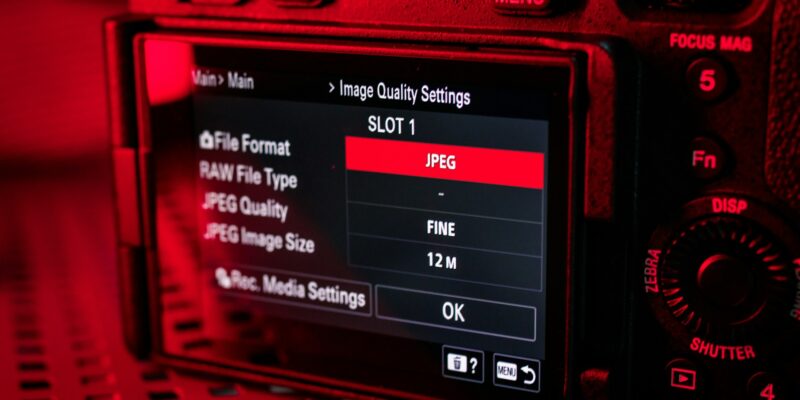If you’re just stepping into the world of photography, learning how to use your camera beyond the automatic mode can feel intimidating. Modern cameras come packed with buttons, dials, and menu options—enough to overwhelm anyone. But the good news? You don’t need to master everything at once.
Instead, by focusing on a few fundamental settings, you can gain control over your camera and dramatically improve the quality of your photos. Understanding these settings empowers you to shoot more creatively, handle different lighting situations, and achieve consistent results—no matter what subject you’re capturing.
Here are the five essential camera settings every beginner should master first.
1. Aperture (f-stop)
What it does: Controls how wide the lens opens to let in light and affects depth of field.
Aperture is one of the most creative tools in photography. A wide aperture (like f/1.8 or f/2.8) creates a shallow depth of field, blurring the background and making your subject pop. A narrow aperture (like f/11 or f/16) keeps more of the scene in focus, great for landscapes or architectural shots.
Why it matters: Aperture shapes the mood and focus of your image. Whether you’re photographing a person, a product, or a sweeping vista, learning to control aperture helps you decide what stands out in the frame.
Pro tip: If you’re unsure where to start, try shooting in Aperture Priority mode (often marked as A or Av), which lets you adjust aperture while the camera selects a compatible shutter speed.
2. Shutter Speed
What it does: Determines how long the camera’s sensor is exposed to light.
Shutter speed affects both exposure and motion blur. A fast shutter speed (like 1/1000s) freezes motion—ideal for sports or moving subjects. A slow shutter speed (like 1/10s or longer) creates motion blur, which can be used creatively for flowing water, light trails, or low-light scenes.
Why it matters: Mastering shutter speed lets you control how motion is captured. You’ll be able to prevent blur in fast-moving scenes or intentionally create it for artistic effect.
Pro tip: Use a tripod when shooting at slower shutter speeds to avoid unintended camera shake.
3. ISO
What it does: Controls the camera sensor’s sensitivity to light.
A low ISO (100–400) is best for bright conditions and gives the cleanest image. High ISO (800–3200 or more) helps in low-light situations but can introduce noise (graininess) to the image.
Why it matters: ISO is your secret weapon in tricky lighting. Knowing when and how to adjust it will help you get properly exposed images without sacrificing quality.
Pro tip: Always try to keep ISO as low as possible, only increasing it when aperture and shutter speed can’t compensate for low light.
4. White Balance
What it does: Adjusts the color temperature of your image to match different light sources.
Natural sunlight, fluorescent bulbs, and incandescent lamps all have different color tones. If you’ve ever taken a photo indoors that looked too yellow or too blue, that’s white balance at play.
Why it matters: Getting white balance right ensures your photos have accurate and natural colors. It saves time in editing and gives your shots a professional polish.
Pro tip: Try the camera’s built-in presets (like Daylight, Cloudy, or Tungsten) to get started. As you advance, you can experiment with custom white balance for more accuracy.
5. Focus Mode
What it does: Determines how your camera locks onto subjects.
Modern cameras offer various autofocus modes, but beginners should get comfortable with:
- Single-shot AF (AF-S) for still subjects
- Continuous AF (AF-C) for moving subjects
- Manual focus for precision work, especially in macro or low-light settings
Why it matters: Missing focus can ruin an otherwise perfect image. Learning to choose the right focus mode based on your subject’s movement ensures sharper, more intentional results.
Pro tip: Use focus points to guide the camera where to focus in the frame, rather than letting it choose automatically.
Bonus Tip: Use These Settings Together
These five settings aren’t isolated—they work together as part of the exposure triangle (aperture, shutter speed, ISO). Mastering their balance helps you achieve the exact look and brightness you want, regardless of the shooting conditions.
At first, it might feel like juggling. But over time, this becomes second nature, and you’ll instinctively adjust based on what you’re shooting. Whether you’re capturing candid portraits at golden hour or framing a dynamic event with a photo booth rental San Antonio setup in the background, using these tools effectively will give your images clarity, emotion, and style.
Conclusion
Becoming comfortable with aperture, shutter speed, ISO, white balance, and focus mode lays a solid foundation for creative control in photography. These five camera settings are the keys that unlock your potential—giving you the freedom to tell stories with confidence and intention. So instead of relying on automatic modes, take the time to explore manual settings. It might feel technical at first, but the more you practice, the more intuitive it becomes. And before you know it, you’ll be capturing not just moments—but your vision, exactly how you imagined it.

Comments